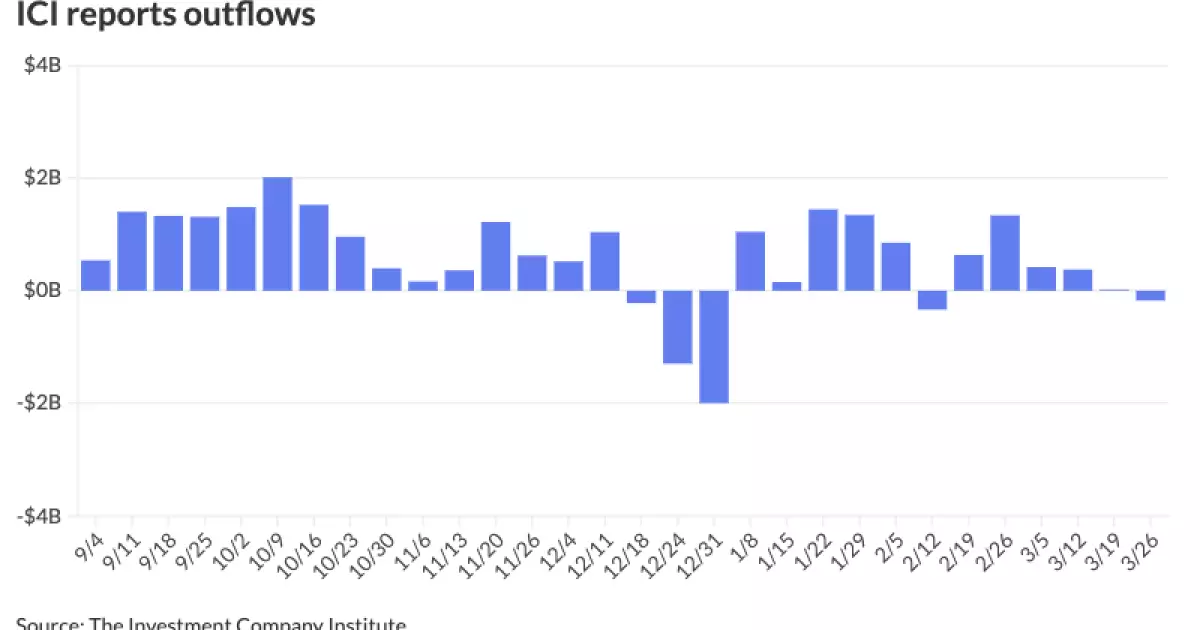In an era of economic unpredictability, it’s the announcements from influential leaders such as President Donald Trump that can instigate considerable market volatility. A recent speech, which outlined sweeping new tariffs, exacerbated an already unstable trading environment. Although municipal yields remained unmoved, the unpredictability in U.S. Treasuries and equities drew particular attention. After the speech’s conclusion, U.S. Treasury yields regained some firmness, while equities experienced a sharp decline. This reaction underscores a fundamental principle of financial markets: uncertainty breeds fear, which in turn can lead to significant shifts in investor sentiment.
The primary concern surrounding these tariffs is their vague implementation details—whether they will involve reciprocal tariffs or affect key trading partners like Canada and Mexico. The lack of clarity has left investors on edge, metaphorically holding their breath as they wait to see how these developments will unfold. Market analysts from J.P. Morgan have expressed a cautious outlook, suggesting that while these tariffs could serve as leverage to secure better trade conditions, the lack of transparency will likely deter investor confidence in the short term.
Drivers of Economic Sentiment
According to James Pruskowski, the chief investment officer at 16Rock Asset Management, we are witnessing a “crumbling” of economic confidence. As he astutely observes, fear, rather than sound fundamentals, is currently guiding market trends. This sentiment is particularly concerning considering the backdrop of softening economic data and rising recession risks. Rather than embracing proactive measures, investors find themselves reacting based on fear, which is not only irrational but could further exacerbate an already tense situation.
With geopolitical risks mounting daily, it becomes clear that the financial landscape is under severe duress. Factors like tax reforms, immigration policies, and spending cuts concerningly contribute to instability. When corporate giants like FedEx issue profit warnings, it sends shockwaves that ripple through various sectors, heightening overall market anxiety.
Municipal Fundamentals vs. Rising Stressors
Municipal bonds, historically viewed as more stable investment vehicles, are experiencing growing pressures that cannot be ignored. Data from the Investment Company Institute indicates that there were notable outflows totaling $175 million in one week. Markets traditionally characterized by stability are feeling the strain of tightening liquidity and emerging uncertainties in areas such as healthcare and higher education finance. Although municipal fundamentals remain generally strong, the persistent fiscal and policy anxieties have created an atmosphere where many weaker players may be shaken out of the market.
Increased discussions around capping the municipal bond tax exemption reflect broader governmental uncertainties. While history may suggest these attempts often falter, the fact that they are being entertained speaks volumes about the ongoing fragility in policy environments. Participants in the municipal sector are gearing up for another round of potential turmoil, and rightly so; the stakes couldn’t be higher.
A Glance at Recent Market Activity
The current lending environment reveals a clear inconsistency, as observed through various pricing strategies for bonds. For instance, in California’s recent bond issuance, yields varied stressfully across different tranches, reflecting the turbulent market sentiment. The yields for some bonds reached as high as 4.45% for maturities extending into 2049, illustrating the palpable tension among investors. This discrepancy in pricing is a stark reminder that complacency has no place in current market conditions.
Furthermore, the dynamics observed with institutions like the San Francisco Public Utilities Commission underline the increasing complexity of bond offerings. Funds are being drawn into higher-risk areas, which could potentially spell trouble down the line. As market actors react to these unprecedented challenges, the specter of a looming recession continues to hover.
Looking Ahead: The Entitlements of Fear
With upcoming bond sales from educational facilities and local governments, investors must be cognizant of the broader economic ramifications. The planned $600 million bond issuance by the California Educational Facilities Authority stands as a testament to the ongoing need for infrastructure funding in a climate rife with financial headwinds. However, a vital question lingers: can these issuances withstand external shocks and shifting investor sentiment?
In this tumultuous climate, the foundational elements of fiscal wellbeing are at risk. It is crucial that policymakers not only focus on immediate pressures like inflation but also address emerging risks that could lead to prolonged stagnation. Only by counteracting fear with actionable strategies can the government and financial leaders build a pathway toward stability. The stakes are high—failure to adapt could transition the current volatility into something more debilitating for future economic prospects.

